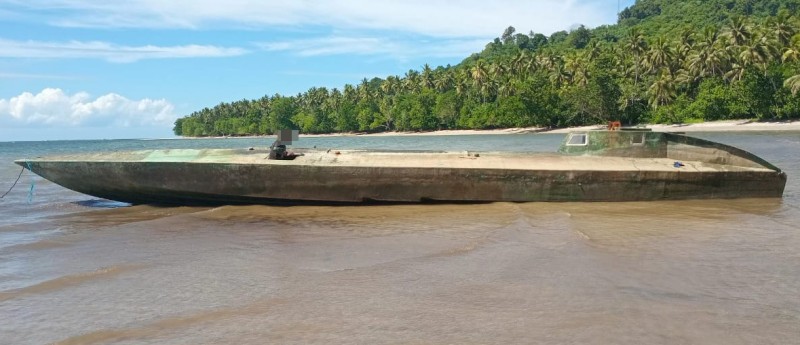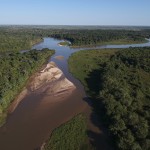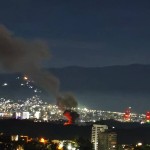Reported by
It has been three weeks since a narco-sub was spotted drifting in the turquoise waters off this remote Pacific nation, and authorities have yet to conclude their investigation, leaving residents with more questions than answers about how such a vessel, built for clandestine drug runs, ended up here — thousands of miles from its usual routes.
And it’s the second one in a year. Last August, a nearly identical craft appeared near a coral atoll about 400 kilometers north of Isabel Island, where the latest sub washed ashore. Maritime officials suspect both vessels may have traveled — or drifted — more than 13,000 kilometers from Latin America to the Solomons, a journey that covers more than a quarter of the planet’s circumference.
Where is the cargo, then? Where is the crew?
Last year’s find was made by Dr. Reginald Aipa, a physician-turned-businessman, who came across the abandoned boat at the Ontong Java atoll. Its starter motors, steering connections, and battery were missing, and the hull was littered with debris. Police inspected the scene, Dr. Aipa said, but never got back to him. He repaired it himself. Now, he is the proud — if unconventional — owner of a refurbished narco-sub, repurposed as his personal boat.
These semi-submersible vessels, typically fiberglass and built to evade radar, are designed for speed and stealth, ferrying tons of cocaine along the coasts of South and Central America toward the United States.
The most recent craft — about 25 meters long and two meters wide — was first seen on July 28, when a member of Parliament encountered it drifting off Ramos Island. Currents pushed it onto a strip of sand beside Ghoveo Village. Police arrived last week, told residents it would stay put “as investigations continued,” and left.
Photos taken by Dr. Aipa show an interior flooded with seawater, scattered debris, and a still-stocked fuel compartment. “We’re still waiting for a resolution,” said Hudson Lalahura, a villager from Ghoveo, speaking to In-depth Solomons. “The boat remains in the village, and we have no idea what will happen next since the police haven’t issued clear instructions.”
Among the few leads: an Ecuadorian voter ID card found on board, hinting at a possible South American link.
Jerome Aucan, who heads the Pacific Community Centre for Ocean Science, said it was plausible the vessel drifted across the Pacific, riding trade winds a few degrees below the equator.
“There is definitely a pathway for an object to drift from the coast of South America all the way to Malaita,” he said. But it might just as easily have crossed under its own power. The fuel tank “could contain thousands and thousands of liters of fuel,” and the long, low profile “can absolutely cross oceans.”
If abandoned near Fiji or Vanuatu, he said, currents could have pulled it toward Australia before looping it north into the Solomons. Either way, he doubts it was left adrift for long — the absence of barnacles on the hull suggests a journey of “a few weeks to maybe a few months at most.”
In a 2024 report, the United Nations Office on Drugs and Crime urged Pacific nations to brace for new trafficking methods — including submersibles — even though “there have been no officially reported cases involving submersible watercraft transporting cocaine in the Pacific.” Fiji, the report noted, remains a key waypoint on the trans-Pacific drug route.
For Ghoveo’s residents, the vessels are a reminder that in this far-flung corner of the Pacific, even the world’s most distant troubles have a way of washing up on shore.



